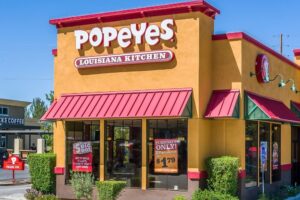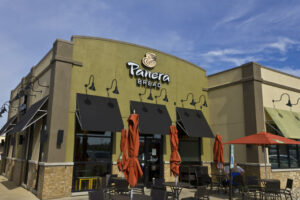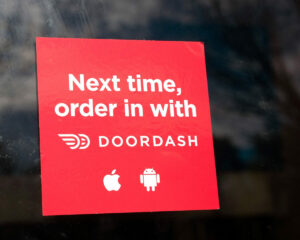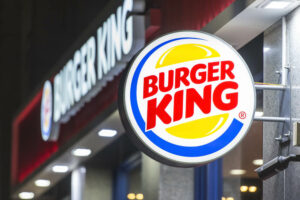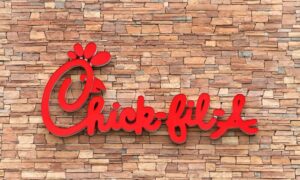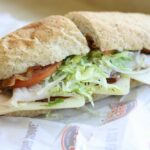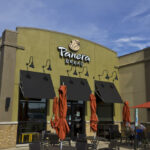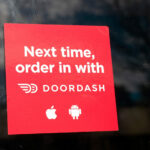Most cash back credit cards only excel in one area, but Chase Freedom Flex manages to check nearly all the boxes. Not only does it offer solid flat-rate bonuses on everyday categories, but it supports 5% bonus categories that rotate each quarter. It also functions as a points card, allowing users to unlock superior conversion rates on travel.
Flex even includes a few extra perks usually tied to cards with annual fees. But with Freedom Flex, the price of membership is exactly $0.
None of this is to say Flex is perfect, especially now that some of its direct competitors are becoming more flexible and generous with their bonus categories. Yet, as of today, it’s still a powerhouse, and in this Chase Freedom Flex review, we’ll explain why it nearly demands a slot in your wallet.
Chase Freedom Flex welcome bonus offer
Highlights
- Earn $200 cash back after spending $500 on purchases in the first 3 months post account opening, issued as 20,000 points
- 5% cash back on gas station purchases up to $6,000 in the first year
- 0% intro APR for the first 15 months, which also applies to balance transfers
- Total value $205 – $225 (potentially more when points are combined with a Chase Sapphire card)
Freedom Flex welcome bonus details
Even though Freedom Flex is technically a points card, its welcome bonus follows the mold of a cash back card. In other words, it’s easy to unlock, but small.
When stacked up against bonuses offered by other no-annual-fee cards, it compares favorably, offering at least as much cash back as its rivals, and unlocking after only $500 in purchases. This works out to an effective 40% cash back rate, which is best in class.
The recent addition of 5% cash back on gas station purchases for an entire year is a welcome touch. Normally, Freedom Flex only offers 5% cash back on gas as a quarterly bonus category.
The card’s 0% intro APR now applies to purchases and balances, and the 15-month intro period is longer than average.
The upside of Freedom Flex increases dramatically for cardholders that already own a Chase Sapphire Preferred or Sapphire Reserve card, as the 20,000 points generated from the welcome bonus can be pooled with these cards.
Pay Yourself Back is a newer redemption method that allows cardholders to redeem points for purchases made from select categories. For Sapphire Card holders, it’s pretty much the best way to spend points if you don’t plan on traveling.
Combining with Sapphire will unlock full access to Ultimate Rewards, which means you’ll be able to transfer points to Chase’s travel partners (avg. value 1 pt = $0.02), and also take advantage of 25%-50% redemption boosts on travel purchased through the Chase portal. The same boosts apply to Pay Yourself Back.
From the detective’s desk: Pay Yourself Back is a newer redemption method that allows cardholders to redeem points for purchases made from select categories. For Sapphire Card holders, it’s pretty much the best way to spend points if you don’t plan on traveling.
Be warned, that Sapphire Preferred carries a $95 annual fee and Sapphire Reverse a bulky $550 price tag.
Chase Freedom Flex Review
Product Name: Chase Freedom Flex
The Final Verdict
Chase Freedom Flex is an extremely versatile cash back card and a notable upgrade over its predecessor, Chase Freedom. Admittedly, the way it handles quarterly bonus categories is in need of a revamp, but that’s a small complaint about a card that provides more benefits than two average cards combined.
Pros
- Solid fixed rate rewards on travel, dining, and drugstores
- 5% cash back on rotating categories
- Earns Ultimate Rewards points, opening up more redemption possibilities
- Good list of bonus perks
- $0 annual fee
Cons
- $1,500 cap on rotating bonus category purchases
- Maximizing rewards requires unnecessary effort
- Foreign transaction fees
Who is Chase Freedom Flex for?
The short answer is that Chase Freedom Flex will work for nearly everyone. It offers a highly competitive 3-5% cash back on a bevy of bonus categories, comes with no-annual fee, and the credit score requirements trend a little closer to merely “Good” than they do for premium cards.
Cash back perks include:
- 5% on up to $1,500 in combined quarterly purchases in across 2-3 bonus categories
- 5% on travel purchased through Chase Ultimate Rewards
- 3% on dining including restaurants, takeout, and eligible delivery services
- 3% on drugstore purchases
- 1% all other
And here’s a look at the 5% rotating bonus categories for 2020-22:
Chase Freedom Flex and Freedom bonus categories
| Period | 5% cash back categories |
|---|---|
| Q1 2020 (Jan. 1 - Mar. 31) |
|
| Q2 2020 (Apr. 1 - Jun. 30) |
|
| Q3 2020 (Jul. 1 - Sept. 30) |
|
| Q4 2020 (Oct. 1 - Dec. 31) |
|
| Q1 2021 (Jan.1 - Mar. 31) |
|
| Q2 2021 (Apr. 1 - Jun. 30) |
|
| Q3 2021 (Jul. 1 - Sept. 30) |
|
| Q4 2021 (Oct. 1 - Dec. 31) |
|
| Q1 2022 (Jan 1. - Mar. 31) |
|
| Q2 2022 (Apr. 1 - Jun. 30)` |
|
| Q3 2022 (Jul. 1 - Sept. 30) |
|
Cash back optimizers
It’s rare for a card to offer 5% cash back on broad categories. So when these opportunities do arise, cash back optimizers love to spring on them.
Chase Freedom Flex affords plenty of these angles. Gas and grocery are usually offered as bonus categories at least once per year, and PayPal, wholesale clubs, and select utilities often make the rounds as well.
From the detective’s desk: A common beginner’s strategy is to combine Chase Freedom Flex with a card that offers exceptional cash back on grocery purchases, but only up to a certain amount (i.e. 6% up to $6,000 in purchases). Use the grocery card most of the year, and fill in the gaps with Freedom Flex when the grocery category is active.
All right, so eBay, movie theaters, and home improvement stores might not appeal to everyone, but at least these occasional niche categories are paired with ones that should have mass appeal.
Dining out with Freedom Flex
Those who prefer having their meals cooked for them will relish Freedom Flex and its 3% cash back rate on dining. There are really only a few other no-annual-fee cards that can match this, one being Flex’s sister card, Chase Freedom Unlimited. Capital One SavorOne Rewards is another, and Bank of America Cash Rewards currently offers dining as one of its 3% cash back categories.
Only a couple of cards go one step further. Altitude Go Visa Signature by U.S. Bank offers 4x rewards on dining, and newcomer Citi Custom Cash offers 5% cash back (up to $25 monthly), on a user’s highest spend category.

Chase is really lenient with its definition of dining, which encompasses delivery services like Grubhub, takeout, and of course, dine-in facilities.
Drugstore shoppers
You’ve probably been to CVS or Walgreens enough to know that modern drugstores sell a lot more than Tylenol, so having this option should enable cardholders to generate 3% cash back on many of their everyday household needs.
From the detective’s desk: It’s important to know that Chase does not code onsite pharmacy purchases made within warehouse clubs, grocery stores, or discount stores as drugstores.
What’s notable here, is that there just aren’t too many credit cards that offer drugstores as a fixed-rate bonus category. Chase Freedom Flex has you covered.
The occasional traveler
If you only get the urge to hop on a plane occasionally, it’ll be difficult to justify the annual fee of a premium points card.
Chase Freedom Flex provides a solution, offering 5% cash back on purchases made through its Ultimate Rewards travel portal, powered by Expedia. Chase’s definition of travel is broad and includes airline tickets, hotel accommodations, car rentals, and cruises.
Users who decide to bump up their travel budget can think about grabbing a Chase Sapphire Preferred. This will net you a 1.25x redemption rate via the Ultimate Rewards portal, and even better value when you transfer points to a Chase travel partner. You’ll also be able to upgrade points earned with Freedom Flex to fully-fledged Ultimate Reward points.
However, Preferred does come with a $95 annual fee, and a lot of folks just want to avoid fees at all costs. Trust us, we understand.
From the detective’s desk: You’ll need to spend 38,000 points on travel per year through Ultimate Rewards to completely offset the Sapphire Preferred’s annual fee. 38,000 points = $95 additional value at 1.25x. Of course, you’ll also get additional perks.
Who should skip Chase Freedom Flex?
International travelers
Chase Freedom Flex charges a 3% foreign transaction fee, so you’ll probably want to go another route when traveling abroad. Capital One SavorOne Rewards is a good alternative here. It’s one of the few no-annual-fee cash back cards that doesn’t levy these fees.
On a more positive note, Flex does provide trip cancelation and interruption insurance, up to $1,500 a person or $6,000 per vacation.
Set it and forget it types
Chase Freedom Flex takes a fair bit of work to optimize, and we feel like a lot of it is unnecessary. 5% bonus category announcements are made only a couple of weeks prior to the upcoming quarter, forcing cardholders to concoct their strategy quickly. Also, these same bonus categories must be activated manually each quarter, which feels like a needless annoyance.
Other cards, like Discover it, roll out their bonus category calendar for the entire year all at once. Why can’t Freedom Flex follow suit?
From the detective’s desk: At least Chase’s rotating bonus categories can be activated retroactively, in so long as you activate them before the deadline, which is typically around the 15th of the month prior to the next quarter.
If you’re not interested in the hassle, but still want to receive all of the same dining/travel booking/drugstore benefits, then just get the Freedom Unlimited, and accept that you may be missing out on a bit of value.
A note to Chase Freedom holders
The Flex’s predecessor, Chase Freedom, stopped accepting new applications in September 2020. We say predecessor because Flex is really just a turbocharged version of the original Freedom. Both offer the same rotating bonus categories, but Freedom is missing the flat-rate bonus categories and some of the perks.
From the detective’s desk: Chase Freedom Flex is a Mastercard, thus granting cardholders access to World Elite. This is notable because the original Freedom is a Visa, as are all other cards in Chase’s main product line.
Existing Freedom members can ask for a product upgrade, but is that really the best path forward? Instead, it might make more sense to hold on to your existing Freedom Card and apply for a Freedom Flex. Doing so has multiple advantages. First off you’ll gain access to Flex’s intro APR rate and welcome bonus. But perhaps more importantly, you’ll be able to double your rotating bonus cash back each quarter, from $75 on $1,500 to $150 on $3,000.

Of course, applying for a new card will result in a hard inquiry on your credit report. It’ll also count toward Chase’s undocumented 5/24 rule, which automatically denies any Chase credit card application, pending you opened five or more credit card accounts (from any issuer) in the past two years.
Given this, if you’re not actually going to make use of the additional cash back, or really want to save a spot for a premium Chase card, then the product upgrade might make more sense.
Redeeming cash back with Chase Freedom Flex
Points can be redeemed for straight cash back as either a statement credit or deposit into a linked bank account, both at face value with no minimum redemption requirement. Apple redemptions are also at 1 pt = $0.01.
You might do a little better redeeming for gift cards, as Chase commonly offers 10% off on supplies.
Those in possession of a Chase Sapphire Preferred or Sapphire Reserve can pool their points, opening up better redemption rates on travel (Chase currently allows point transfers to 11 airlines and three hotel partners), and unlocking better Pay Yourself Back options.
Pay Yourself Back sort of works like rotating bonus categories, except instead of spending money to earn bonus points, you spend bonus points on prior purchase categories (selected by Chase). Redemption categories might include dining, grocery stores, home improvement, charities, or more.
With a Sapphire Preferred you’ll receive 25% more value on Pay Yourself Back redemptions, and 50% with Reserve. That $100 delivery from DoorDash, can be paid down with just 6,667 points.
From the detective’s desk: 50% more points value is the equivalent of a 33.3% discount, that’s why in our example, the DoorDash delivery was paid off with 6,667 points and not 5,000.
Other perks
- Cell phone protection: Since Freedom Flex is a Mastercard you’ll receive a pretty generous cell phone protection plan, covering $800 per claim on theft or damage, and up to two claims total ($1,000 maximum).
- DashPass subscription: Chase is partnered with DoorDash, and as part of the deal cardholders receive a 3-month complimentary DashPass subscription valued at $29.97. If you choose to continue with the service, your next 9 months will be discounted by 50%. Cardholders must register by the end of 2021.
- Credit on Lyft: Take 3+ rides a month, pay with a World Elite Mastercard, and earn a $5 Lyft credit.
- Credit on Fandango: Spend $20 on Fandango purchases and get a $5 Fandango reward.
- Complementary Shoprunner membership
- 5% discount on follow-up Hello Fresh deliveries.
- Trip cancellation or interruption service
- Auto rental collision damage waiver
Alternative card options to Freedom Flex
If you want to keep it in the Chase family, but don’t want to pay an annual fee, then the best alternative is Chase Freedom Unlimited. You’ll still get the same flat-rate bonuses but will lose the 5% rotating categories and the Mastercard World Elite benefits. In exchange, all non-bonus categories will award a flat 1.5% cash back, uncapped.
While Freedom Unlimited has a bigger upside, it’ll take an enormous amount of spend to fully realize it. Most people are going to benefit more from Freedom Flex, pending the rotating bonus categories are ones they’ll actually take advantage of.
From the detective’s desk: If you max out Freedom Flex’s rotating bonus category purchases each quarter, you’ll generate an additional $240 in cash back annually (4% on top of the standard 1% on $6,000 in purchases). To earn the same amount with Chase Freedom Unlimited you’d have to spend $48,000 annually on non-bonus categories (.5% additional cash back over Flex’s standard rate * $240).
Discover it Cash Back is another viable alternative, especially for those who really like to plan ahead. The card offers the same 5% cash back and $1,500 quarterly purchasing caps on 5% bonus categories. Yet, all bonus categories are revealed well ahead of time, typically around November for the following year. It also comes with a unique and potentially lucrative welcome bonus offer: Discover will match all of your cash back (uncapped) for the first year.
The big drawback is that it doesn’t offer any fixed-rate bonuses.
Finally, if you want more control over your bonuses, U.S. Bank Cash+ Visa Signature should fit the bill. With this card, you’re allowed to choose two 5% categories from a pool of 12. The purchasing cap is $2,000 per quarter — $500 more than what Chase Freedom Flex offers.
You also get to select one 2% category (no purchasing cap). Unfortunately, the most appealing categories — gas stations, restaurants, and grocery stores — fall into this bucket, so there’s no path to earn 5% cash back on these purchases.
Which cards pair best with Chase Freedom Flex?
If we haven’t mentioned it already (we have, multiple times), Chase Freedom Flex pairs perfectly with cards from the Chase Sapphire family. The way it works is that Flex is basically your workhorse, doing all the heavy lifting and earning all the points.
Then, you combine your Flex and Sapphire points together to unlock a bevy of goodies, including better redemption rates on travel and bill pay. Of course, Sapphire cards do come with annual fees, $95 for Preferred and $550 for Reserve (which is offset partially via a $300 annual travel credit).
If you’re just not interested in traveling, then it’s worth looking into other pairings. One basic strategy is to hunt for a second card that accounts for Flex’s weaknesses.
For instance, the American Express Blue Cash Preferred offers 6% cash back on groceries and select streaming services, and 3% on gas and transportation. These categories are only occasionally covered by Freedom Flex.
The Blue Cash Preferred/Freedom Flex pairing is especially terrific for those who spend a lot at grocery stores, as Blue Cash Preferred caps its 6% cash back on grocery purchases at $6,000 annually. But if you also have Freedom Flex in your wallet, you can use Blue Cash Preferred when Flex isn’t offering 5% on groceries, and switch over when it does. If you have a Freedom Card, now you’ll earn bonus cash back on up to $9,000 in grocery purchases each year.
We also recommend pairing Chase Freedom Flex with a card that offers a superior flat rate. Freedom Unlimited is an option, but we prefer a card like Citi Double Cash, which comes with no-annual-fee, and awards 1% cash back at the time of purchase, and an additional 1% when you pay your bill.
Chase Freedom Flex: Frequently asked questions
Is Chase Freedom Flex worth it?
Chase Freedom Flex has no annual fee and awards high cash back rates across a variety of categories. Its value increases further if you already own Chase Ultimate Rewards card, so there’s little reason to try not to out.
The only real drawbacks are that users will have to plan ahead to truly optimize their cash back, and Chase will automatically deny your application if you applied for more than 5 credit cards in the past two years. So make sure Chase Freedom Flex aligns with your spending habits before taking the plunge.




